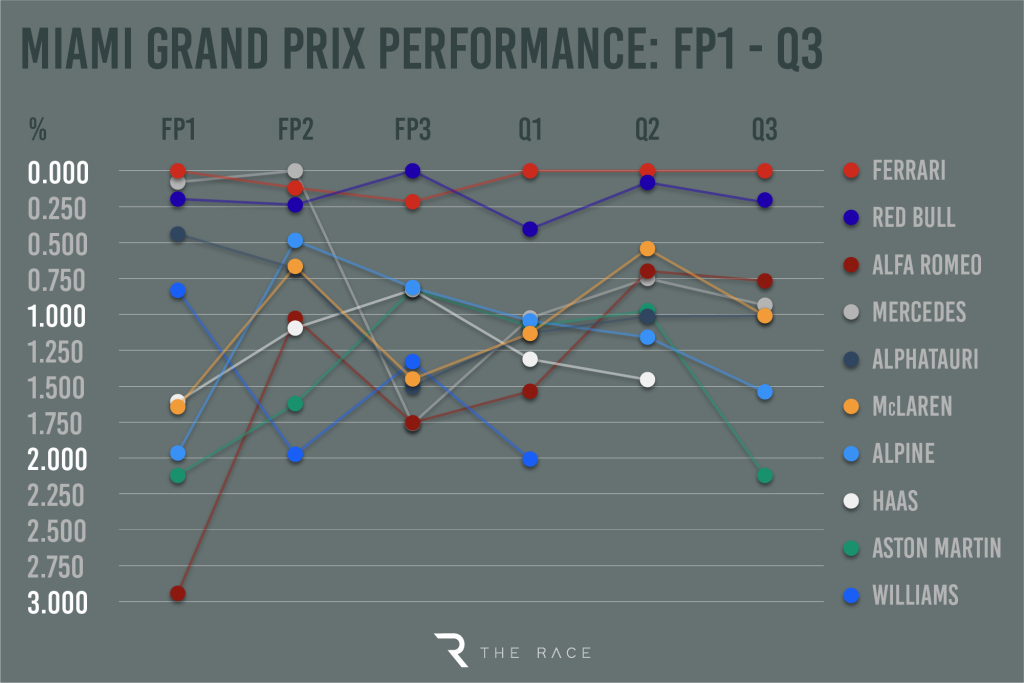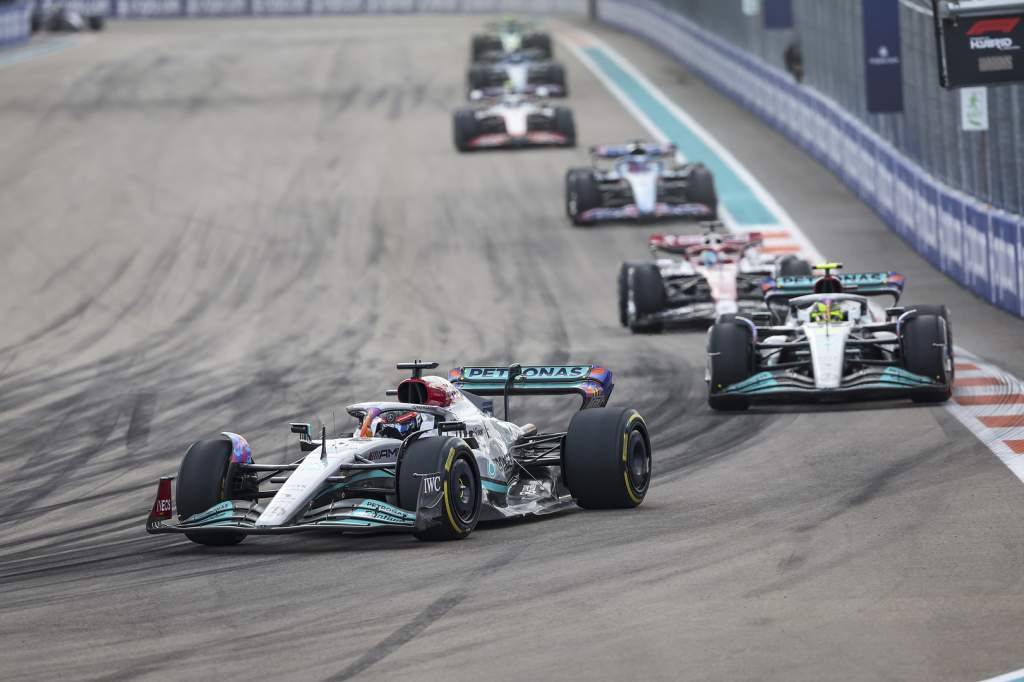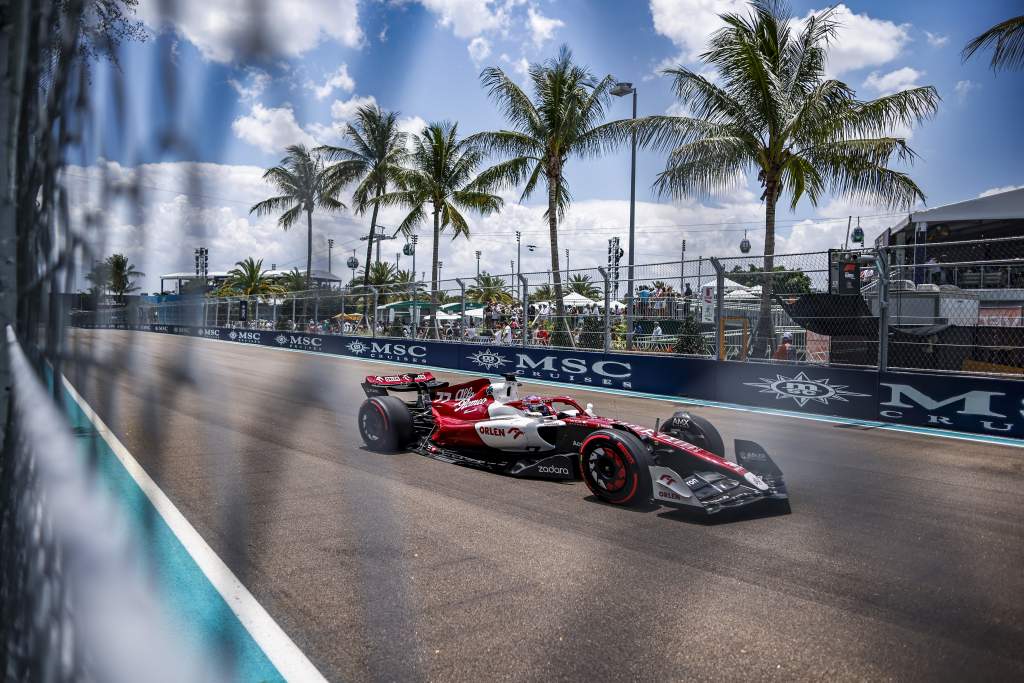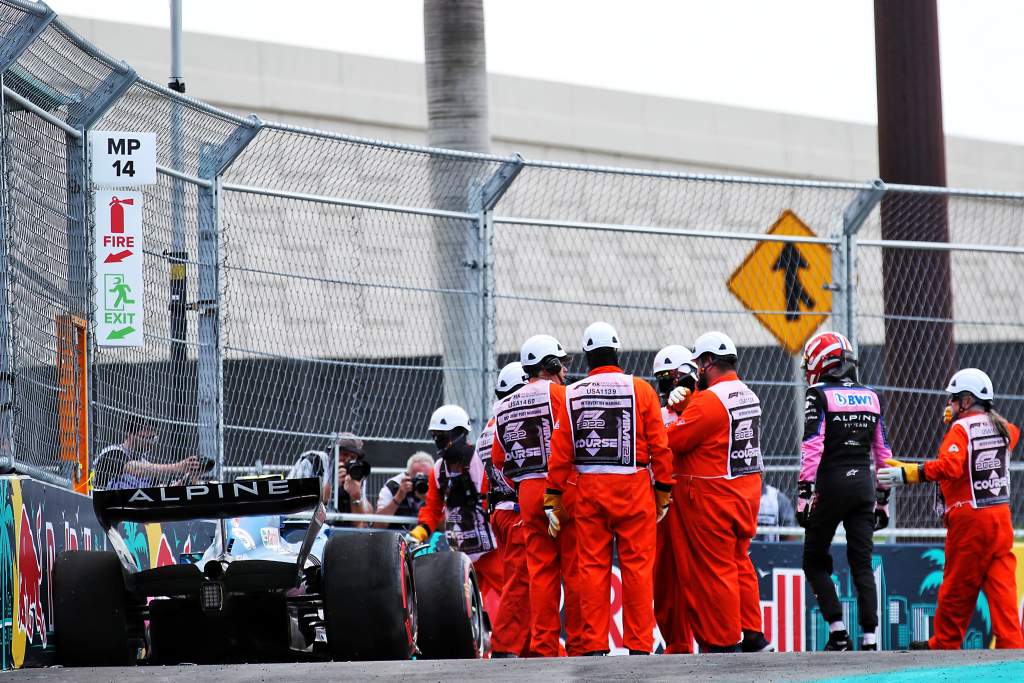The way each team progresses or regresses during a Formula 1 race weekend from session to session is always revealing, especially when it’s at a new circuit that no-one has any experience of until they rock up for the event. That’s the situation the teams faced in Miami last weekend.
They all had the circuit GPS data, track-surface data from Pirelli and all the other information available in advance. This, together with their own aero map details, is the input data for their simulation tools that are used to produce the downforce-to-drag compromise and then optimise the set-up for each of the different tyre compounds.
Each team will have effectively completed significant virtual mileage of the circuit, not only using the driver-in-loop simulator but also using other tools that allow countless experiments to be conducted before they have even set foot at the track. How valuable that is will be down to a combination of the accuracy of the preliminary data and the quality of the tools and the processes each team employs to use them.
Looking at F1’s top two teams, this year Ferrari has always visibly run higher downforce levels than Red Bull. That is usually a positive on a new track given the conditions will always be very ‘green’ at the start of a weekend before rapidly gripping up as the weekend progresses. As that happens, the advantage will diminish and, as the cars go into parc ferme conditions when they leave the pits for qualifying, what you have then is what you have for the race. As we saw in the race, if you can’t make that early break then higher downforce can become a hindrance because of the straightline speed disadvantage. That’s what allowed Max Verstappen to pass Charles Leclerc relatively easily early in the race.
We can evaluate each team’s progression through the weekend by taking their fastest lap from each session – FP1, FP2, FP3, then the three segments of qualifying. This can then be converted into a percentage of the outright fastest lap for each session.

There are factors that muddy the waters, such as the fact we can only be sure of the fuel loads for qualifying and not in the preceding sessions. But even then, it can still be a bit confusing and, as we saw in Miami, cars could do multiple quick laps on the tyres. That means some runs started with more fuel than was required for that one ‘white-knuckled’ banzai lap. Q3 is the only time we can be really sure that everyone is on the sniff of an oily rag.
This is partly because the 2022 Pirelli tyres have been designed to offer what is called ‘grip recovery’, meaning you can complete a push lap, let the tyre cool down, then go again with a similar level of grip to before. Sometimes, we even see drivers setting their best laptimes on ‘scrubbed’ tyres, something that’s been rare in previous seasons in the Pirelli era.
In keeping with the season so far, Ferrari and Red Bull were on it from lap one. But in FP1 and FP2 they were joined by Mercedes. It genuinely appeared there could be a three-team battle at the front and it looked like Mercedes had got on top of its porpoising. That was an exciting prospect because the more competition you have, the better the racing.
It’s great to have two teams fighting it out at the front, but when you have three teams and six cars in the battle for pole position and then at the front of the race it’s a far more complex situation. Every strategy decision becomes more difficult because you have to cover off not one, but two rival teams.

But the Mercedes pace dropped away, it wasn’t as strong on the Saturday as it looked on Friday. Yes, you can argue it’s only practice so it was never likely to carry that form into the rest of the weekend, but both its single-lap and long-run pace looked strong on the Friday. But it looked like a completely different car on the Saturday, porpoising more than ever.
Mercedes, and its rivals, were all surprised by its drop-off. The other teams felt that their analysis from the Friday performance suggested Lewis Hamilton and George Russell should be genuine contenders in qualifying.
Looking at the rest of the teams, you always have to take the initial pace with a pinch of salt because things are so congested in the midfield. Some teams might just run a lower fuel level in a session than the others, but what was striking was that Mercedes, Alpine and McLaren (aside from Q2) never repeated the relative performance they showed in FP2.
Perhaps the track was at its best then but if so it was the same for everyone – normally, if it’s a track grip level increase everyone makes progress.
Alfa Romeo, meanwhile, was up and down to a yo-yo, primarily thanks to Valtteri Bottas’s crash on Friday. But when push came to shove in Q3 he was best of the rest behind the big two – albeit having come dangerously close to being knocked out in the first part of qualifying.

Alpine’s trajectory from FP2 to Q3 was worrying. It’s unusual to see this type of thing. Yes, one session can be better than the others, but a continual downward slope usually suggests a team has shot its bolt in terms of fuel loads, engine and session strategies early on. It had nothing left to give when it mattered.
But given Miami was a new track, that also potentially suggests that the team was poor at ensuring it had a set-up that worked with the track evolution. As the grip increases, the car will be more prone to understeer so you have to factor that in with your set-up. During free practice, you aren’t simply trying to find the best set-up for that particular moment, but one that will be at its best for qualifying and the race.
Despite all the track surface data, things are never as straightforward as you would expect. The Miami surface wasn’t quite as expected and there were problems with patches of it breaking up, particularly early in the weekend, so that was an extra curveball.
You could argue teams that perform well on Friday and then slip back simply got their preparation right but then slid back as others reacted to the changing conditions and improved. That can be the case, but usually it indicates they haven’t done as good a job at predicting how things will develop in terms of the grip levels.
There’s also the added complication of learning how the car reacts over the kerbs and bumps. Also, this season it’s about how close you are to having a porpoising problem. These are all things that you need real-world running to understand.

Alpine can be cut a little slack given it only had one car in qualifying after Esteban Ocon’s FP3 accident, with Fernando Alonso not getting the best out of the car in Q2 thanks to traffic, but even so it suggests it didn’t make the most of the weekend. Such a uniform trend downwards is a concern, and perhaps no surprise from a team that has been a little inconsistent in recent years and not always appeared to have the best handle on how its car works.
If you take this slippery slope on face value, I would suggest the team is not reacting at the circuit as well as it should or the data being sent back to base to optimise the set-up from afar is not adequate. I can’t believe it is as simple as that Alpine is too keen to run low-fuel very early in the weekend. With a driver like Alonso in the car, this seems a strange thing to do.
Looking at the performance of both Ferrari and Red Bull, their consistency session-to-session from the start of FP1 proves they did their homework very efficiently back at base. That meant that when they hit the track, they were able to read whatever conditions got thrown at them. It also shows they both understand their cars and their characteristics very well, making set-up changes to follow the track evolution.
Q2 is the best performance comparison as by Q3 some teams didn’t have as many new tyres available, meaning it’s all down to one lap as opposed to a banker then an all-out lap. Williams was the only team not to make it into Q2, but shot its bolt in FP1 and never really got back to that level, struggling to get the tyres in the window in qualifying, so need to look closely at how it goes about their weekend procedures.



